Juniper Blue Stars Scaly is one of the most popular garden crops that are grown today in the territories of summer cottages, in gardens, parks and other recreational areas. This coniferous plant is a dwarf shrub with a wide, dense dome-shaped crown and splashing branches.
Juniper Blue Star: Description and Basic Plants
Juniper Scaly Blue Star Star will not call a rapidly growing plant: its growth rate is no more than 5-8 cm per year. Being an adult, the plant can reach 0.5-1 m in height and about 1.5-2 m in diameter. He has a short, pretty barbed housing, which sometimes happens with flakes. The plant itself has a greenish blue, silver shade, whereas young shoots can have a turquoise and even grayish color. The grown twigs acquire a calmer shade, but the general view of the plant remains pretty exotic.
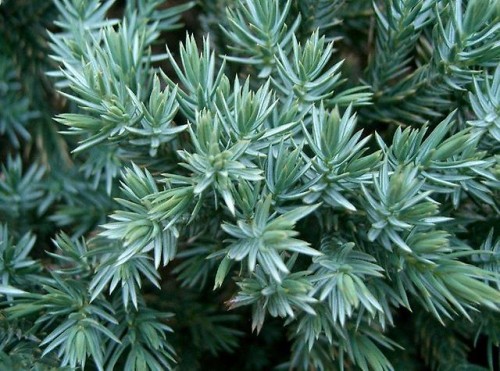
This culture is fairly compared with a blue star, stretching on the lap of nature. That is why many designers use juniper Blue Star in landscape design, creating original compositions from its rigorous and lush branches. His blue crown contrasts winning with other garden plantings, which makes Juniper Blue Star with an excellent decoration for rocky slopes, mountaineering, open loggias and terraces, other garden compositions, ruddles and even balconies. Especially spectacularly looks living hedges made with the participation of this shrub.
The country area, decorated with plants, combined with other juniper (Golden Golden Carpet, Blue Chip or Moonglow) and small-scale embankments will be an evergreen corner of nature, affecting its painting. It is rare, a unique color of the plant, which is obtained due to an interesting combination of young shoots with already "matured" branches gives the effect for which this culture received its rather exotic name. Let's admire the compositions composed of gardeners based on Juniper Blue Star in combination with fluttering, rock and horizontal species of the plant.
A feature of the Blue Star juniper is his poisonousness, which is why it is important to observe special care by working with him. It is especially worth paying attention to the fact that children's games should not take place near the plantings of this plant: the kids should not play his cheese or collect its berries. For landscaping playgrounds Juniper Blue Star - not the most suitable option.
This type of juniper is fruits in the autumn time of the second year after landing, and its berries are used as a therapeutic agent. However, its healing properties are better not to experience independently in the form of tincture, but to give preference to pharmacy drugs.
Juniper Blue Star: landing and care
Selection of places for landing
The Blue Star is not too whimsical to the surrounding conditions, however, prefers the location in the sun, on a well-ventilated area. In the shade, he can lose his spectacular color and become loose. The plant is steadily for dry climate, calmly maintains the cold of the middle strip and even the northern regions of Russia. Winter in Blue Star under the layer of snow, however, with the first rays of the spring sun, the juniper will need a sanitary trimming.
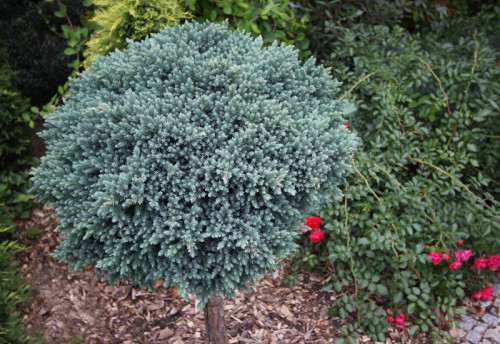
Selection of soil for juniper Blue Star
The plant is absolutely unpretentious to the soil and can grow on any soil, except for the moistened, stagnant sites, as well as the places of unnecessary salinization. If the clay soil is chosen for the juniper disembarking, it is necessary to take care of its systematic drainage, and the landing mixture should contain a maximum of sand or peat.
When planting a juniper Blue Star in a rocky kidney or sandy soil, you should dilute the planting mixture by humus or clay. The priority space is usually mured with peat or compacted bevelled grass or pine bark. The perfect soil for the plant is weakly acidic, as follows sweat. In too dry summer, the Blue Star needs regular, but not too frequent watering: it is important to take care that the soil is unnecessarily compacted.
Landing of Juniper Blue Star: Stages and subtleties
- When landing several juniper bushes, it is necessary to withstand a certain distance between them: from 0.5 to 2 m. The landing should be carried out in the pit, the depth of which will be at least 50-70 cm, and the volume is 2 times more of the earth coma on the root of the plant.
- On the bottom of the pit quite a wide layer (15-20 cm) lay a layer of broken bricks, can be replaced with sand.
- The root neck does not deepen, but is left at the level of the earth's surface.
- If the groundwater is close enough, you need to perform drainage from rubble, layer no more than 15 cm.
- The ideal soil composition for Juniper Blue Star when landing is a mixture of peat, sand and land in approximately equal proportions.
With the right choice of a place to plant a juniper of a given variety and observance of all nuances of disembodies, Blue Star must thank you deep, saturated color and a lush of the shrub.
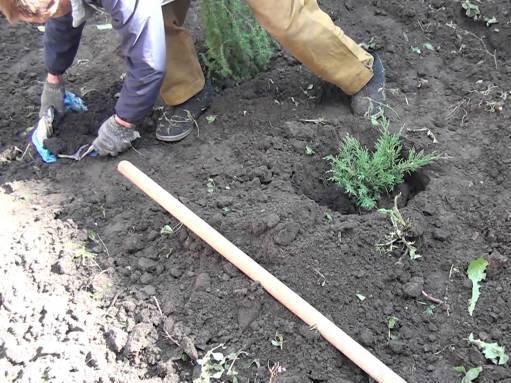
How to care for juniper Blue Star?
In addition to an infrequent, but regular irrigation, it is very important to produce a mulching of a shrub of Blue Star: it will accelerate its growth and will be an additional opportunity to moisturize its root system.
Before carrying out mulching, you need to cleanse from weeds and the garbage site where the shrub grows. An integrated mineral mixture is suitable for the fertilizer of the Earth, which can be mixed with sand or sawdust. Next, you need to put the mulch itself, which includes pebbles or gravel, a layer - no more than 7-8 cm.
The soil in which juniper grows need from time to time to fertilize. The nutritional mixture is desirable to be made in the period when the kidneys swell (the end of March is the beginning of May), placing it around the plant, bringing to a depth of 6-10 cm. Then the juniper needs to be poured.
Tip: directly under the root or branch of the plant, put fertilizer fertilizers. It is better to do this by retreating from the trunk and branches of the shrub 15-17 cm.
The undoubted advantage of juniper Blue Star is its drought resistance. With a sufficient frequency of irrigation is once every 1-2 weeks, while it can also be sprayed at the clock when the sun is already quite low.
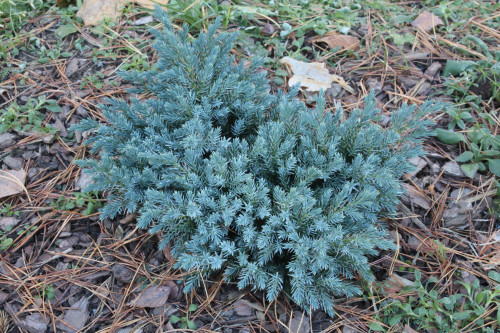
If the plant was planted in an open soil in the region, which is famous for strong frosts, in the cold season it needs to be stolen, and with abundant snow sediments, its branches are associated with twine to prevent them.
Thus, for proper care of the juniper Blue, just enough:
- systematic soil mulch;
- watering and spraying the plant 2-3 times a month;
- drainage and shallow loosening of soil after watering;
- soil fertilizers with complex mineral fertilizers.
Reproduction of juniper Blue Star
Since juniper belongs to domestic plants, they can be propagated both vegetative and seed. But the seeds never get decorative varieties, which is why the best type of breeding for Juniper Blue Star is stupid. For these purposes, adult shrubs use, from 7 to 10 years old. Blue Star Street is better in the middle of spring: 8-10 cm long cutters are cut off with a shrub, while capturing a piece of wood, which is called "heel".
The bottom of the cutting should be thoroughly cleaned from the needles, carefully cut off the bark. The process is better to put in a stimulator of growth per day, and then plant a sprig into the planting mixture consisting of peat with sand. The pot with a plant is covered with a dense film and put in a half-walled place for 4-6 weeks at an optimal temperature to 20 ° C. It was during this time that the plant develops the root system; After the measures taken, the juniper landed into the open soil.
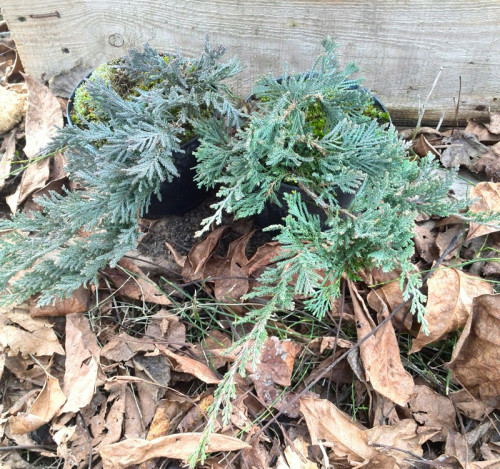
In the cold season, young, even faster juniper covered with a noodle. The plant growing occurs within 2-3 years, and only after this time you can transplant the blue old on its permanent place.
How to protect the juniper Blue Star from pests and diseases?
Even such an unpretentious plant, like juniper, can suffer from pests: a shield, mining moths, tweeted or a web and a needle tick. And if pests can be cope with chemicals, spraying plants as they are infected, then from such a dangerous disease, like rust, get rid of quite difficult.
How to recognize rust, striking shrub? It is quite simple: it looks like a bit convex, bright orange stains that spread on the stiffs of the plant and its needles. Rust stain with time dries and turns into powder - these are mushrooms, or rather their disputes. The disease is subject to speedy treatment, otherwise the plant risks to die. Often rust disputes appear in the warm season - from May to July, and serve as a catalyst for the process of infection can be a protracted period of rain or a sharp decrease in air temperature.
How to deal? The most common method of combating rust juniper Blue Star is a solution of "Armenid": they need a plant thoroughly spray every 7-10 days before its complete recovery. Instead of this solution, a copper vigor can also be used. If juniper is affected only partially, you need to completely remove contaminated branches.
A measure of the prevention of infection of juniper or attack on its pests is the separation of garden planting: no fruit shrubs and other cultures should not be planted in the neighborhood with the Blue Star and other types of coniferous plants.
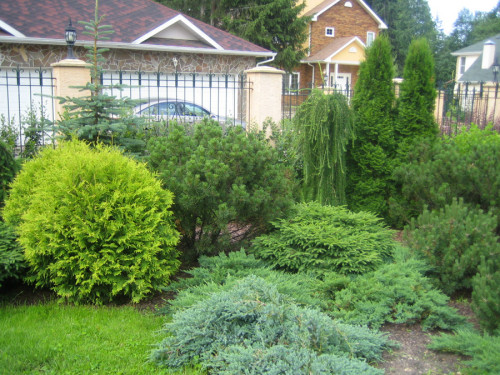
If the juniper will be given proper care, the plant will be a wonderful decoration of any garden, a doomed flower bed or platform. Among other things, juniper is a unique antibacterial and disinfecting agent, only 1 hectare of the plantations of which can clean the air in a rather large settlement.
In which magnificent corner of nature, you can turn your garden, the courtyard or country site, using simple landscape design techniques and using coniferous plants, learn from the video below. Make your life beautiful!

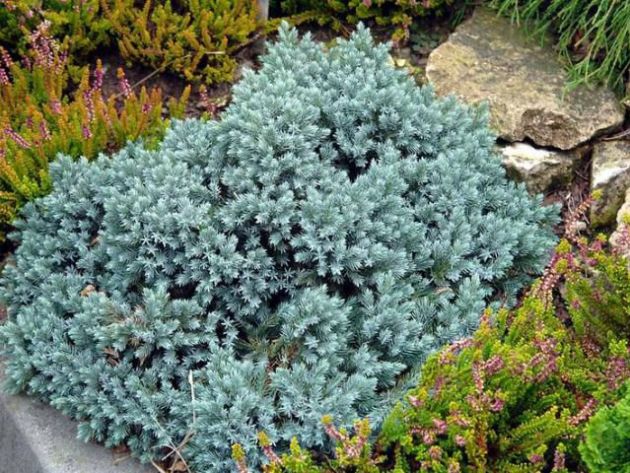
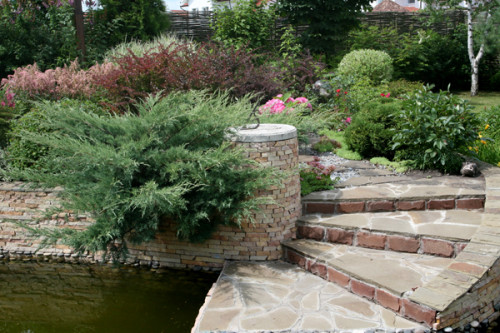
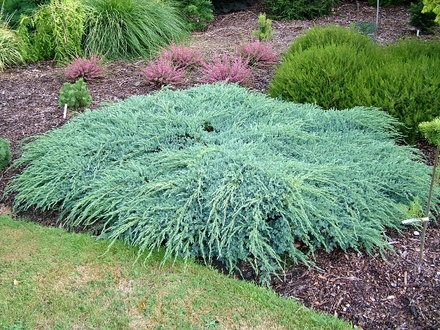
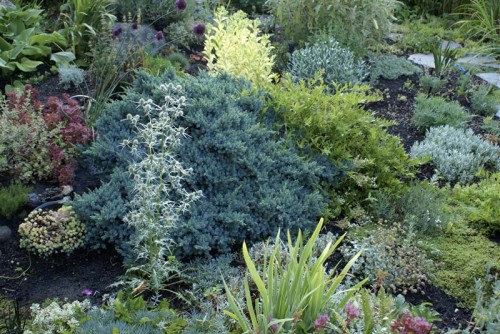

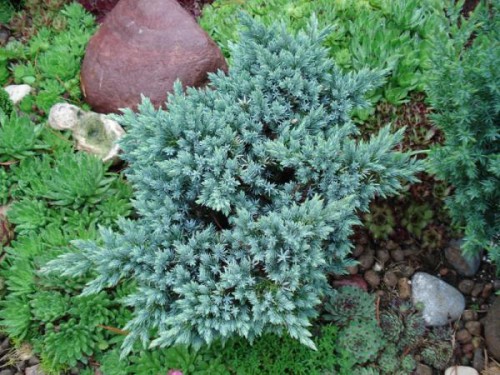
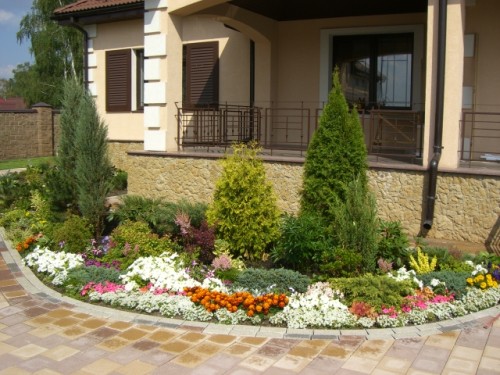
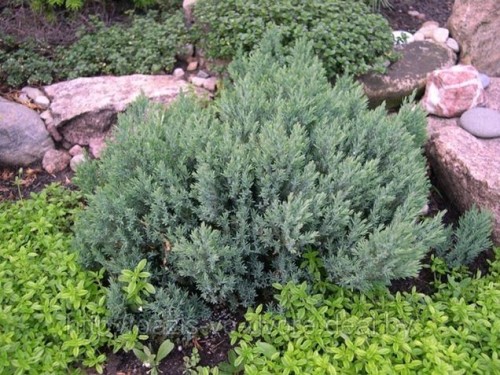
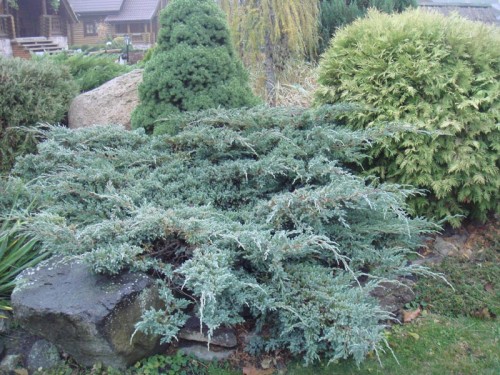
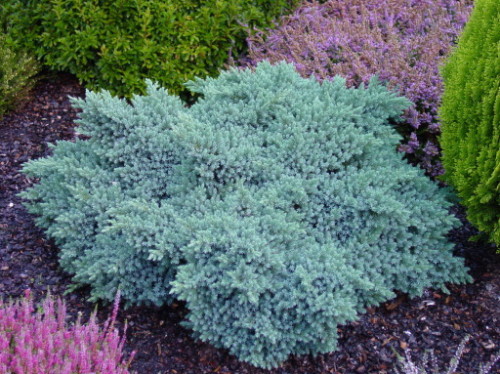


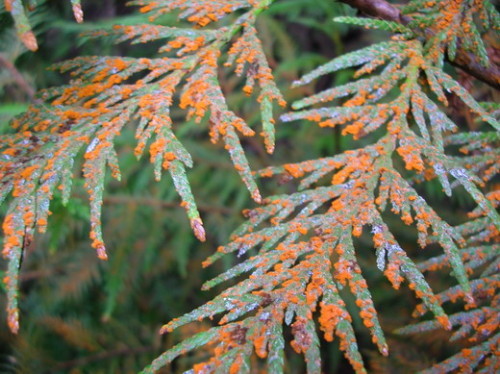












 Start a discussion ...
Start a discussion ...